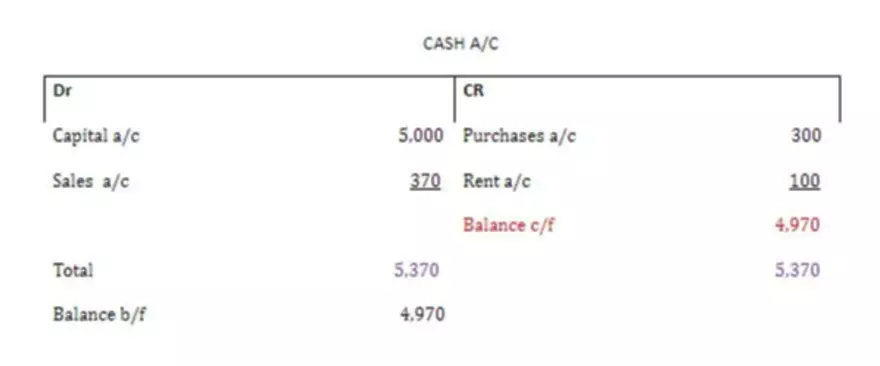Content
- The Advantages of Paying Salary in an S Corporation
- So, Should I pay myself a draw or salary?
- Mistakes New Business Owners Make
- How to Report Payments to Yourself for Taxes
- Are you required to take a salary from an LLC?
- Mistakes to avoid while paying yourself
- Making the call: How much do you pay yourself?

Where there are multiple owners, if all of the LLC members participate equally in the operation of the business, you can’t pay one a salary and not the others. However, if you are the only member that has a management role, you can pay yourself a salary without setting up salaries for the other participating LLC members. The two most common options are owner’s draw vs salary to treat yourself as an employee with wages, or to treat yourself as an LLC member and receive distribution from the profits. A salary goes through the payroll process and taxes are withheld. To strike the right balance, it’s important to look at the numbers, decide how much money your business needs, and understand the way your income will be taxed.

This is nothing but the income left after deducting all business expenses from your gross revenue. Once, you have decided your payroll schedule, you can pay yourself by either writing a check and depositing the same into your bank account. Owner’s equity is nothing but the amount of money you have invested in the business. Hence, whenever you withdraw money, you tend to lower the amount of the owner’s equity.
The Advantages of Paying Salary in an S Corporation
Just note that it’s called a distribution or a dividend instead. In other words, you as the business owner are able to withdraw profits that the business has produced. But, they should be withdrawn from the owner’s equity account. Additionally, this can also include the financial contributions you’ve made to operate the company in the past. And, it can be a combination of profits and capital contributed. An owner’s draw typically doesn’t affect how you’re taxed on business profits.
- Each partner’s taxable income corresponds to the percentage of the profits they own according to the partnership agreement.
- If you’re taking an owner’s draw, your pay should come from the business’s net profit, which is revenue minus all operational expenses.
- When you are looking to provide these shareholders with dividends, money is transferred from the corporate account to the shareholder’s bank account.
- You should consult your own professional advisors for advice directly relating to your business or before taking action in relation to any of the provided content.
- If the program opens back up again, you should know how your owner’s draws or salary affects your PPP application.
Draw, when taken by the owner, is a deduction from the business’ capital. Owners and partners can take out any amount of money they choose to reimburse themselves from the business account when they take a draw. There is no payroll tax on the amount they take as they are essentially repaying a loan to themselves.
So, Should I pay myself a draw or salary?
There’s a tax free dividend allowance for the first £2,000 pa, after which the tax rate on company dividends is 7.5% or 32.5% (2020/21) depending on your other income. Only shareholders can receive dividends as a reward for their investment risk. Directors who are not shareholders can not receive dividends. Your tax strategy also figures into how much you pay yourself. The best way to pay yourself from a corporation or other company structure depends largely on which structure and payment method would cost you the least in taxes.
Make sure to maximize any existing opportunities before paying yourself a large salary. This will be a major factor in deciding how much you pay yourself. Pensions can also be paid into a pension scheme for the director. The company https://quickbooks-payroll.org/ can claim the pensions paid as a business expense and the director has no tax to pay until they draw down the pension in retirement. This may be very tax efficient but obviously the director cannot access the money immediately.
Mistakes New Business Owners Make
The money you save is worth the extra investment in time and resources it may take to develop the right strategy. Paying yourself a salary when self-employed gets reported as an expense deduction in your business taxes and as income in your personal taxes. On your personal taxes, you would report your salary as W-2 income on your 1040 form.
The good news is that your salary and the 7.65% of FICA tax the S-corp pays on your salary is tax deductible and will reduce the company’s taxable income. For a draw, you can just write yourself a check or electronically transfer funds from your business account to your personal one. A salary is more complicated because you have to withhold payroll and income taxes. In an S corp, the owner’s salary is considered a business expense, just like paying any other employee. Any net profit that’s not used to pay owner salaries or taken out in a draw is taxed at the corporate tax rate, which is usually lower than the personal income tax rate.
Erin Ellison is the former Content Marketing Manager for OnPay. She has more than 15 years of writing experience, is a former small business owner, and has managed payroll, scheduling, and HR for more than 75 employees. Also, be careful to not pay yourself unreasonably high compensation. The IRS has taken the position that excessive compensation is a “disguised” distribution of company profits. In turn, these “disguised” distributions are really dividends in the eyes of the IRS and lose their tax-deductibility. The good news is you won’t immediately have to pay tax on your draws. The bad news is these draws won’t reduce your taxable income like a salary would.
- Below, we’ll explain how to choose the best method for paying yourself as a business owner in a way that makes sense financially and practically for your specific situation.
- On the surface, a guaranteed payment and an owner’s draw are similar.
- Draws are not personal income, however, which means they’re not taxed as such.
- You can arrange something different in a partnership agreement, such as a 70/30 split between two partners.
- Knowing how to pay yourself as a business owner is essential for financial planning and tax preparation.
- However, corporations might be able to take similar profits, such as distributions or dividends.
- Furthermore, he is required to pay income tax and self-employment taxes quarterly.
Learning CenterIn-depth resources designed to make your payroll, HR, and benefits experience easier. Time & AttendanceIntegrated time and attendance tracking, PTO request and accrual management, scheduling and reporting. Solutions PayrollPayroll tax filing, automated and integrated processing, paperless reporting and more. Owner’s equity is calculated after subtracting all the liabilities from the total value of assets. You can first determine your fixed expenses like rent or mortgage. Then, you can work out the variable expenses that are necessary for living and that change each month.
